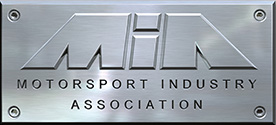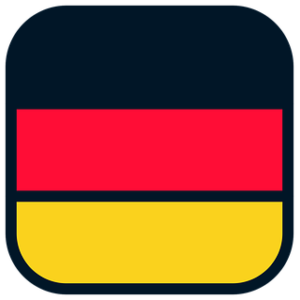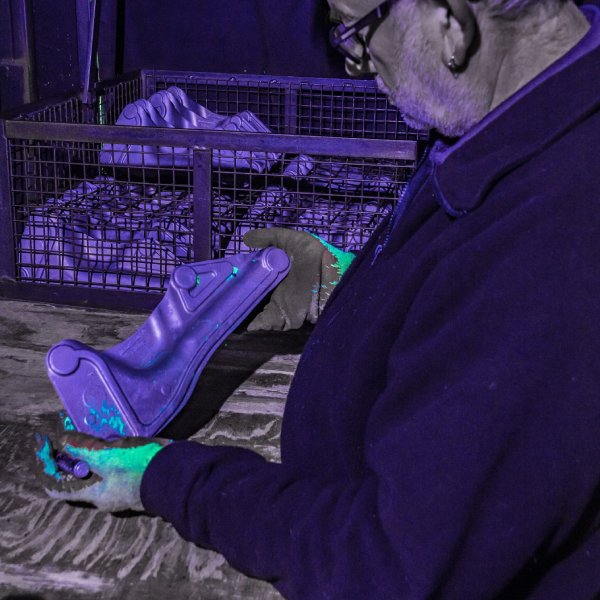Post Heat Treatment Dye-Pen Systems
In the intricate world of metal alloy and aluminium heat treatment, Fluorescent and Visible Dye-penetrant flaw inspections, are widely used methods to detect material/product surface flaws, to ensure the integrity and reliability of the final product. In this blog post, we’ll delve into the different types of flaw inspection penetrant systems, shedding light on their applications and significance in various industries.
Types Of Penetrant Used For Dye-Pen Services
The two types of penetrants are colour contrast and fluorescence. Colour contrast penetrants rely on the visible colour difference between the penetrant and the surface being inspected to detect flaws or discontinuities. This method highlights defects by utilizing a penetrant with a contrasting colour to the surface, making any flaws easily visible to the naked eye. On the other hand, fluorescence penetrants employ fluorescent dyes that emit visible light when exposed to ultraviolet radiation, illuminating any flaws under suitable lighting conditions.
Water Washable Penetrant System
The water washable penetrant system represents the pinnacle of simplicity and environmental sensitivity. Employing a penetrant that is easily applied and removed, this system is particularly suited for parts that are sensitive to solvents, making it a preferred choice in the aerospace industry. The process involves applying the penetrant to the material’s surface, allowing it to dwell for a specified duration. Excess penetrant is then washed away with water, revealing any surface discontinuities.
This system’s ease of use and eco-friendly nature make it a standout choice for industries prioritising environmental sustainability while ensuring the thorough inspection of materials.
Post-Emulsifiable, Lipophilic Penetrant System
The post-emulsifiable, lipophilic penetrant system caters to the needs of non-porous metals, offering a robust solution for flaw inspection. In this system, a lipophilic penetrant is applied to the material’s surface. After the designated dwell time, excess penetrant is removed, and a developer is applied. The developer acts to draw the penetrant out of any surface-breaking discontinuities, making them visible for inspection.
This type of penetrant system finds its niche in industries such as automotive and manufacturing, where non-porous materials are prevalent. The meticulous nature of flaw detection provided by this system ensures that even the most subtle discontinuities are brought to the forefront.
Solvent Removable Penetrant System
When dealing with materials that are not sensitive to solvents, the solvent removable penetrant system becomes the method of choice. This system utilises a solvent-based penetrant that is applied to the material’s surface. After the prescribed dwell time, excess penetrant is removed using a solvent, revealing any surface discontinuities in the process. The oil and gas industry often benefits from the reliability and efficiency of this penetrant system.
The solvent removable penetrant system showcases its prowess in environments where solvents pose no harm to the materials being inspected. Its application in the oil and gas industry underscores its robustness and effectiveness in demanding settings.
Post-Emulsifiable, Hydrophilic Penetrant System
For flaw inspection on non-porous materials, the post-emulsifiable, hydrophilic penetrant system steps into the limelight. This system employs a hydrophilic penetrant applied to the material’s surface, followed by the removal of excess penetrant after the designated dwell time. A developer is then applied to draw the penetrant out of any surface-breaking discontinuities, making them readily visible for inspection.
Industries such as medical and pharmaceuticals, where non-porous materials are prevalent, find the post-emulsifiable, hydrophilic penetrant system to be an invaluable tool in ensuring the quality and reliability of their products. The stringent standards of these industries demand flaw inspection methods that leave no room for oversight.
The choice of a dye-penetrant flaw inspection system depends on the specific requirements of the material being tested and the industry’s environmental considerations. Water washable, post-emulsifiable, lipophilic, solvent removable, and post-emulsifiable, hydrophilic penetrant systems offer a range of options to cater to the diverse needs of the alloy and aluminium heat treatment industry. As technology advances, these flaw inspection methods continue to evolve, providing even greater precision and reliability in ensuring the structural integrity of materials used in various applications.
Professional Dye-Penetrant Inspection Service – Get A Free Quote
We offer Dye-Pen as a stand alone service or as part of a greater heat treatment process (typically done after heat treatment, age-hardening, etc…). Click here for more information, or you can get your free quote today by contacting us via contact form, via email or via phone call, to speak to one of our friendly and knowledgeable team.












